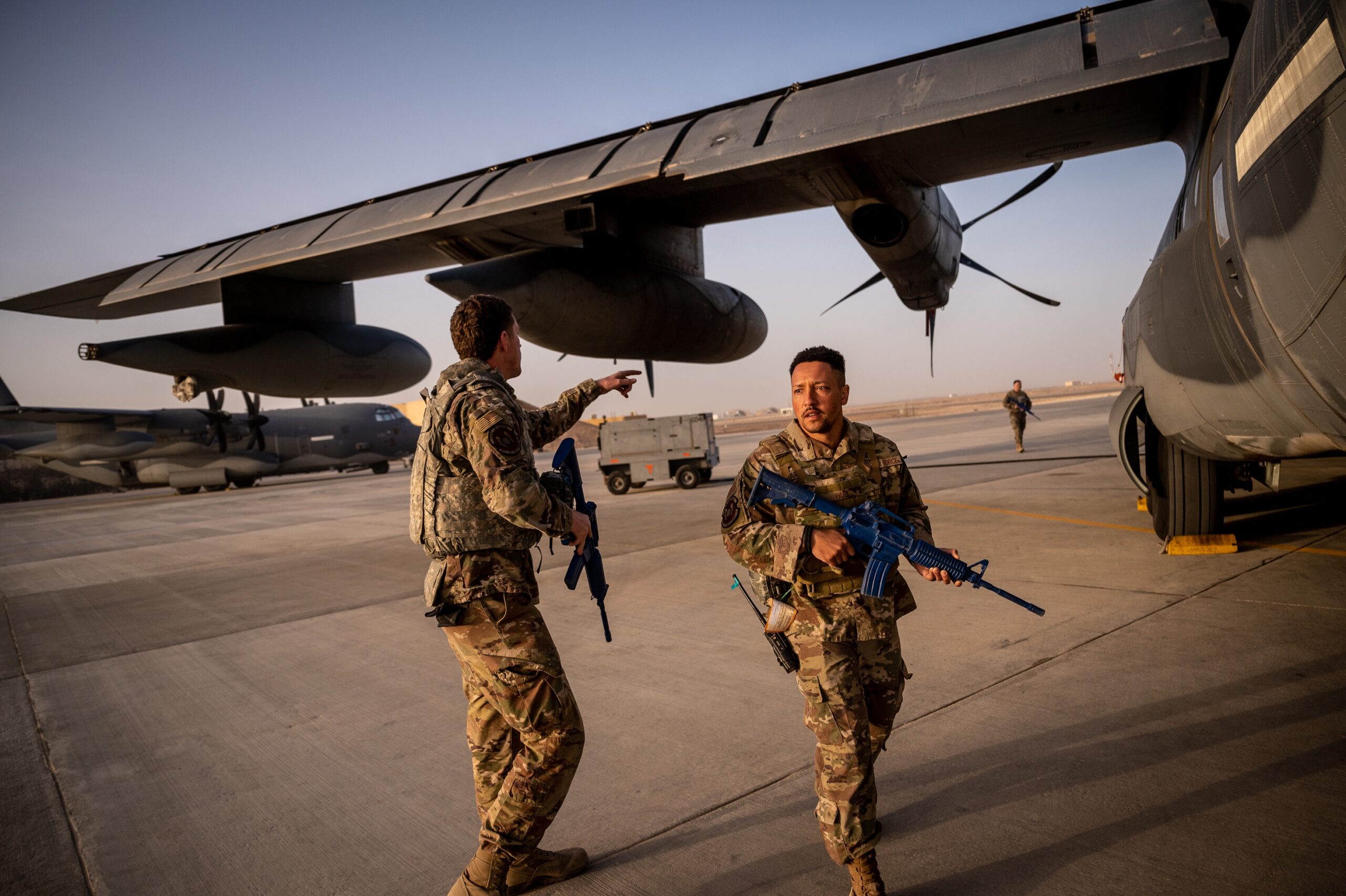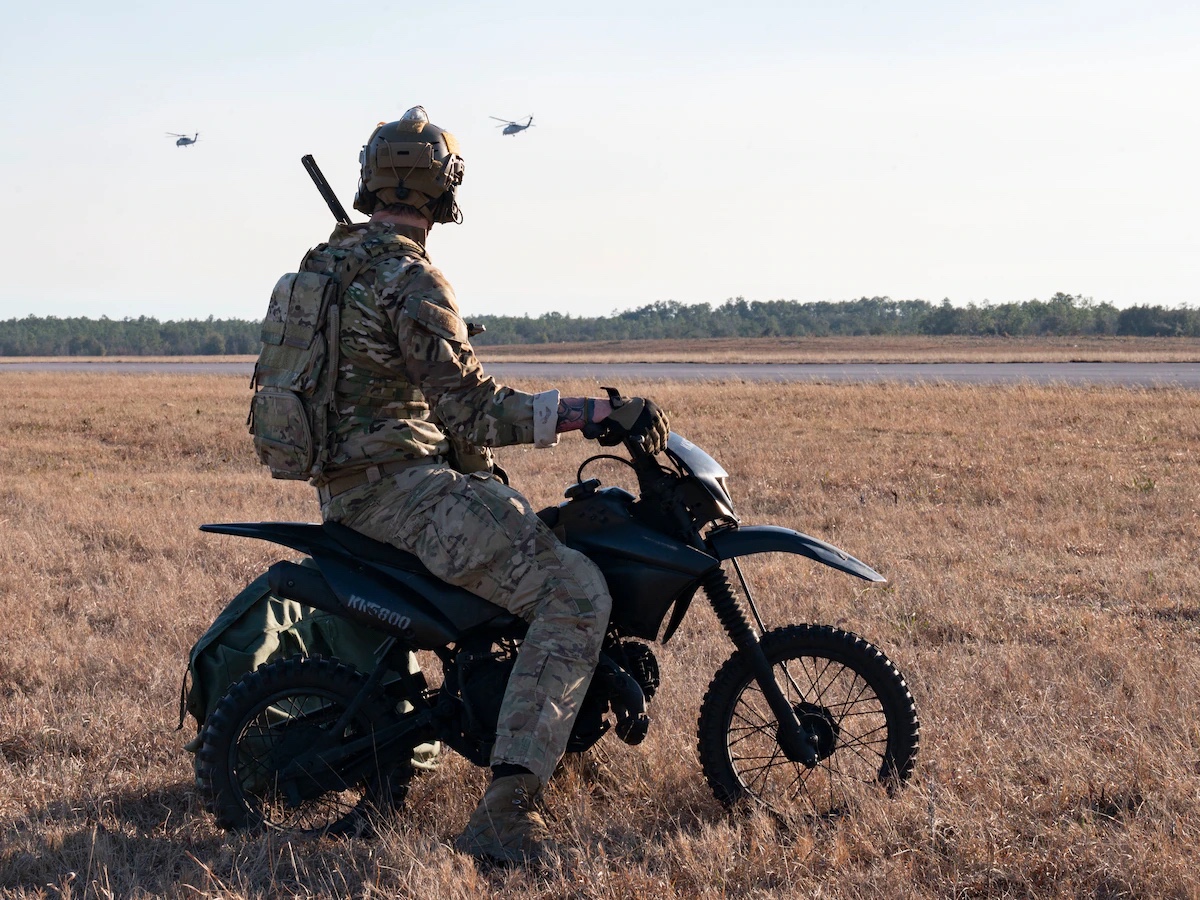
Fort Benning, Georgia —
Imagine yourself going through months of training for a rigorous event just to lose your teammate to an injury weeks prior and have to drop out. Now, imagine being the only U.S. Air Force member in a group of over 100 U.S. Army soldiers – well, this is exactly the situation U.S. Air Force Capt. Reace Hudgeons, a Tactical Air Control Party Officer at the 17th Special Tactics Squadron, Detachment One, Savannah, Georgia, found himself in when he competed in the Best Ranger Competition April 8 – 10, 2022, at Fort Benning, Georgia.
After three days of competition, Hudgeons and his new teammate, a U.S. Army Captain James Moore, finished sixth out of 51 teams on the first-ever joint team from different units..
A few days before the Best Ranger Competition was set to begin, Hudgeons received a phone call from the 75th Ranger Regiment asking if he would want to participate in the competition with one of their Army Captains. He had already assumed he would not participate this year due to his Air Force teammate’s injury, but immediately jumped on the opportunity.

“I drove to Fort Benning late on Friday evening and didn’t arrive until after one in the morning,” said Hudgeons. “Eight hours later I met my teammate, CPT Moore, for the first time and we started training together.”
Even though the two had never met before, they didn’t find it hard to integrate and plan for the three days of competition that lied ahead. They already had common ground due to the joint training between their units.
“I always wanted to compete in this event, but never expected to win or even place in the top ten,” said Hudgeons. “I just wanted to prove that there are Air Force members who can do the same things as Ranger-qualified soldiers in the Army.”
After three days and two nights of 19-mile ruck marches, six-hour land navigation events, long foot movements, and many other events, the two crossed the finish line in sixth place with smiles on their faces.
“Teaming up with a guy from the 75th Ranger Regiment made a huge difference,” said Hudgeons. “They’re already the best of the best and being able to team up with someone of that caliber made me push myself even harder. Keeping up with him was challenging at times, but it was hands down such a worthwhile experience.”

The team’s experience highlights the strength in unity behind joint forces. Hudegons and Moore showed up having never met each other before and integrated seamlessly due to trusting in each other’s abilities to do the work based on the credibility established from their career fields.
“The relationship we had, the success we had, is what our relationship is supposed to look like as TACPs and Army maneuver units,” said Hudgeons. “They should trust us to compete under their unit’s name with an expectation of success. That’s where we need to be as an Air Force and a sister service.”
When asked if he would do it again, there was no hesitation. Even through the months of training leading up to the event, to having to drop out last minute to re-joining with a brand new teammate, he would not trade his experience for anything.
“I highly recommend any qualified member to volunteer and compete,” said Hudgeons. “Know what you’re getting into, be prepared to do 80-100 miles on your feet, and have the right attitude. Show up, perform, work alongside them, do some things better than them, and they will welcome you with open arms.”
By Capt Savannah Stephens, 24 SOW Public Affairs





































































































































